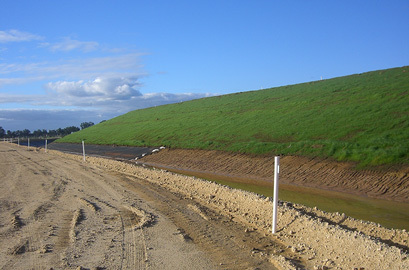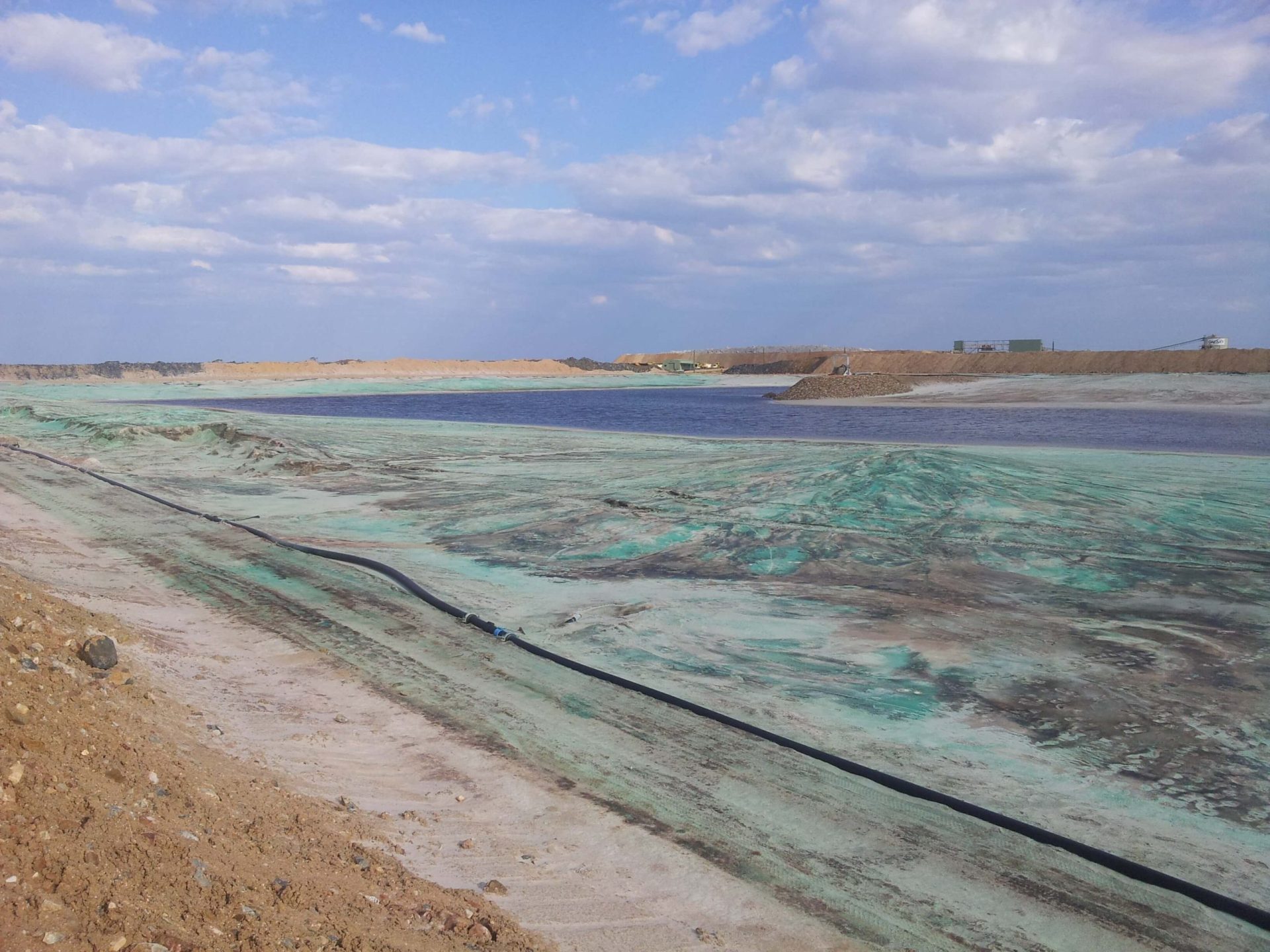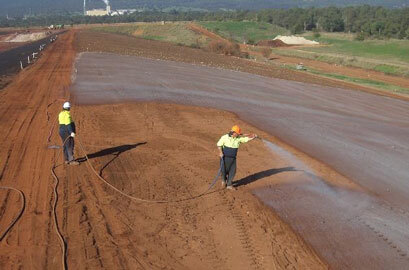Understanding Revegetation Solutions: What is Hydroseeding?

In the evolving landscape of sustainable land development and rehabilitation, traditional methods are progressively being eclipsed by the advancement and further understanding of hydroseeding. This innovative technique, whilst having been created in Connecticut, USA, in the 1940s, has revolutionised our approach to modern environmental conservation, offering a more efficient and sustainable method for land management.
In this month’s blog, we answer the question ‘What is hydroseeding’, covering its application techniques and highlighting its sustainability advantages.
What is Hydroseeding?
Hydroseeding is a sophisticated blend of paper, water, and seeds, meticulously sprayed to offer a long-term solution for erosion control and to promote revegetation in areas previously utilised for open activities. Excelling in large-scale projects and adept at handling challenging terrains, hydroseeding marks a significant departure from traditional vegetation establishment methods. It stands at the forefront of stabilising soil and managing erosion, guiding land management strategies towards a future that is both more sustainable and efficient.
The Process of Hydroseeding
Hydroseeding utilises specialised machinery to spray the mixture over the soil surface, ensuring even coverage across diverse landscapes, including those with steep slopes or irregular topographies.
The mixture’s components are carefully selected to match the project’s environmental conditions and soil type, incorporating a variety of seeds to suit the desired vegetation outcome.
The inclusion of paper mulch within the mixture serves a dual purpose;
- It prevents erosion by binding to the soil
- Creates a humid microenvironment that enhances seed germination and growth.
Meanwhile, fertilisers provide essential nutrients, supporting the early stages of plant development, and the water content initiates the germination process.
These different components of the mixture ensure not only the rapid establishment of vegetation but also contribute to the long-term health and stability of the soil.

What is The Application Process For Hydroseeding?
Hydroseed is usually sprayed onto a targeted area using a large and powerful hose attached to a water truck, or from a truck-mounted water cannon where it is then allowed to settle. To keep track of the application, a coloured dye is added to the mixture. This dye makes it easy to see which areas have been treated, which areas still need coverage, and how much time has passed since the hydroseed was applied.
Hydroseeding vs Traditional Revegetation Methods
While traditional revegetation solutions have laid the groundwork for innovation in rehabilitation and erosion control, they often fall short in uniform coverage and efficiency.
Methods such as direct seeding, broadcasting, and manual planting of seedlings vary in success and can be costly in terms of labour and maintenance.
Hydroseeding offers numerous advantages over conventional seeding methods, making it a great choice for project managers, environmental consultants, and developers alike;
- Efficiency and Cost-Effectiveness: Hydroseeding covers large areas quickly, reducing labour costs and time. Its ability to establish vegetation also diminishes the need for multiple applications, making it a cost-efficient solution.
- Environmental Benefits: The method uses less water compared to traditional seeding and significantly reduces soil erosion. By promoting quick vegetation establishment, hydroseeding improves soil stability and health, contributing to the overall ecosystem’s resilience.
- Customisation and Versatility: The hydroseeding mixture can be customised to suit specific environmental conditions and project requirements, ensuring high germination rates and successful vegetation establishment across diverse scenarios.
Does Hydroseeding Have an Environmental Impact?
Revegetation is a core solution to soil conservation, erosion prevention, and habitat restoration following the unnatural clearing of land. By fostering quick vegetation establishment, it aids in carbon sequestration and addresses climate change challenges, enhancing land aesthetics and promoting biodiversity.
This holistic approach not only revitalises degraded landscapes but also contributes to the creation of resilient and sustainable ecosystems.
Overall, hydroseeding has a positive environmental impact, using less energy and resources than traditional seeding methods, and promoting better vegetation rehabilitation of the area.
Tailoring Hydroseed Mixtures
Hydroseeding mixtures come in many different formats, including the following;
Depending on the conditions, terrain and desired outcomes of any given hydroseeding project, the seed and mulch mixture can be tailored to optimise results using additives such as:
Flexible Growth Mediums (FGM)
Flexible Growth Medium is an advanced form of bonding fibre mixture (BFM) that includes flexible fibres, which enhance the mixture’s strength and flexibility. This allows the seed layer to conform to the soil surface more effectively and withstand environmental stresses such as heavy rains. FGMs are ideal for challenging sites with severe erosion risks and for restoring vegetation in environmentally sensitive areas.
Native Seed Mixtures
Native seed mixtures can be curated to include locally appropriate species suited to the local fauna and growing conditions.
This is particularly beneficial to habitat restoration and conservation projects, and for maintaining local ecosystems. It requires careful selection of seeds to match the local climate and soil conditions, ensuring the successful establishment and growth of indigenous plant species.
The ability to curate the seed selection aids in ensuring existing ecosystems thrive by introducing flora, for example, that are adapted to the dry, harsh conditions typical of northern Western Australia.
Tackifiers and Soil Stabilisers
Tackifiers and soil stabilisers can be added to the hydroseeding slurry to improve its effectiveness. Tackifiers are adhesive agents that help the mulch and seeds adhere to the soil surface, reducing the risk of erosion or washout during heavy rain events.
Soil stabilisers, like Agzyme and CO2 Smash, enhance the soil’s physical properties, improving seed-to-soil contact and promoting healthier plant growth. These additives are often used in combination for enhanced performance.

Explore Innovative Hydroseeding Solutions with Rainstorm
Beyond the immediate benefits of hydroseeding, it contributes to broader environmental conservation and sustainability efforts.
If you are exploring hydroseeding options for your project, enquire with our team of qualified technicians at Rainstorm today. Our team can create a custom mix and apply it to your site, allowing you to continue your operations with minimal disruptions. With a focus on sustainability, Rainstorm ensures that not only do we meet your current project needs but also contribute towards your long-term environmental goals.













